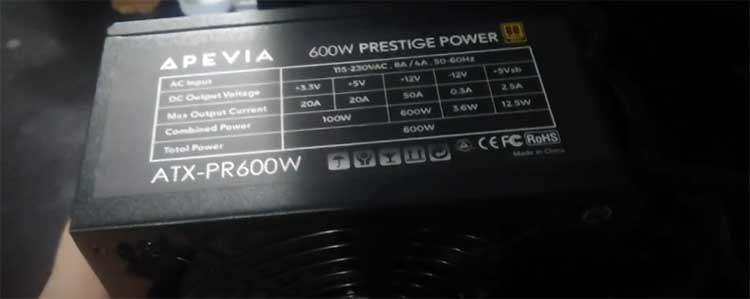I’m a 35-year-old tech lover who’s dropped my iPhone 16 more times than I care to admit, so I tested the Spigen Tough Armor ($30, 1.4oz) and OtterBox Commuter ($40, 1.8oz) to keep it safe.
Both promise rugged protection with style, but which one’s the real deal?
I’ll share my real-world experience, break down their features, and compare them to help you pick the perfect case.
Grab one at Amazon or their official sites to shield your phone without breaking the bank.
Comparison Table: Spigen Tough Armor Vs. OtterBox Commuter
| Feature | Spigen Tough Armor | OtterBox Commuter |
| Price | $25–$40 | $35–$50 |
| Weight | 1.4oz | 1.8oz |
| Drop Protection | Military-grade, up to 10ft | Military-grade, up to 6–10ft |
| Materials | TPU, polycarbonate, impact foam | Polycarbonate, synthetic rubber |
| MagSafe | Optional MagFit models | Optional on some models |
| Extras | Built-in kickstand | Optional holster, port covers |
| Water Resistance | None | Dust-resistant port covers |
| Warranty | Limited 2-year | Limited lifetime |
My Experience with Spigen Tough Armor and OtterBox Commuter
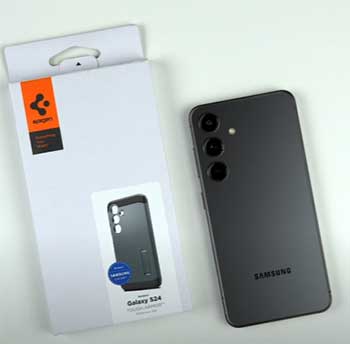
As someone who’s always on the go—juggling work, gym, and the occasional clumsy moment—I needed a phone case that could keep up.
I picked up the Spigen Tough Armor (black, $30) and OtterBox Commuter (black, $40) for my iPhone 16.
The Spigen felt sleek and lightweight from the start.
Its textured back gave me a confident grip, and the kickstand was a game-changer for watching YouTube during lunch breaks.
I dropped my phone from my desk (about 3 feet) onto hardwood, and it emerged without a scratch, thanks to the Air Cushion tech and impact foam.
The buttons were responsive, but I noticed dust sneaking into the ports after a beach trip.
The OtterBox Commuter, by contrast, felt like a mini tank.
Its dual-layer design—rubber inside, hard shell outside—saved my phone during a 4-foot drop onto concrete while rushing to a meeting.
The port covers kept dust out during that same beach trip, a big win.
But it’s bulkier, making my skinny jeans a tight fit.
The buttons were stiffer, which annoyed me during quick texts.
You’ll love Spigen’s sleekness and kickstand, but OtterBox’s ruggedness and dust protection gave me peace of mind in tougher spots.
What Makes Spigen Tough Armor and OtterBox Commuter Stand Out
The Spigen Tough Armor combines a TPU inner layer with a polycarbonate shell, enhanced by Air Cushion corners and XRD foam for 10-foot drop protection, per TechGearLab.
Its built-in kickstand is perfect for hands-free viewing, and MagFit versions support strong wireless charging.
The OtterBox Commuter uses a synthetic rubber inner layer and polycarbonate outer shell, meeting MIL-STD-810G standards for 6–10-foot drops, per CASEBX.
Its port covers block dust, and some models include a holster clip.
You’ll pick Spigen for style and affordability, OtterBox for rugged durability.
How They Fit Into My Routine?
I swap cases based on my day’s demands.
The Spigen Tough Armor is my daily driver for city life—its slim profile slides into my pocket during commutes, and the kickstand props my phone for video calls.
I use the OtterBox Commuter for outdoor adventures like hiking or site visits, where its port covers and sturdy build shine.
Installing the Spigen is a breeze, while the OtterBox’s tight fit takes a minute.
Both handle wireless charging well, though Spigen’s MagFit is snappier.
You’ll find either case easy to integrate, depending on your vibe.
Key Features of Spigen Tough Armor and OtterBox Commuter
Spigen Tough Armor ($30) offers military-grade protection with a dual-layer design, Air Cushion tech, and a kickstand.
It’s lightweight at 1.4oz, with precise cutouts and a 2-year warranty, per Spigen’s site.
OtterBox Commuter ($40) provides dual-layer protection, dust-resistant port covers, and a lifetime warranty.
It’s heavier at 1.8oz but includes a holster option, per OtterBox’s site.
Both support iPhone and Samsung models, with Spigen offering more color options.
You’ll love Spigen’s sleek functionality, OtterBox’s rugged extras.
Pros of Spigen Tough Armor and OtterBox Commuter:
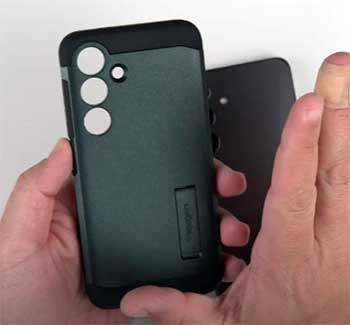
- Military-grade protection: Both meet MIL-STD-810G for drops up to 10 feet.
- Affordable: Spigen at $30 is a steal; OtterBox at $40 is reasonable.
- Sleek design: Spigen’s slim profile looks modern and stylish.
- Dust protection: OtterBox’s port covers keep debris out.
- Kickstand feature: Spigen’s built-in stand is great for videos.
- Grip: Spigen’s textured back, OtterBox’s rubber layer prevent slips.
- Wireless charging: Spigen’s MagFit and OtterBox’s slim models work well.
- Precise cutouts: Easy access to ports and buttons on both.
- Durable materials: TPU, polycarbonate ensure long-lasting use.
- Warranty: Spigen’s 2-year, OtterBox’s lifetime coverage add value.
Cons of Spigen Tough Armor and OtterBox Commuter:
- Bulky OtterBox: Commuter’s 1.8oz adds noticeable weight.
- No screen protector: Neither includes one, requiring separate purchase.
- Slippery Spigen: Smooth edges can feel slick without a firm grip.
- Stiff buttons: OtterBox’s buttons need more force to press.
- No water resistance: Both lack waterproofing for submersion.
- Limited Spigen warranty: 2 years vs. OtterBox’s lifetime.
- OtterBox colors: Fewer options than Spigen’s variety.
- Dust in Spigen: Open ports collect debris in dusty environments.
- OtterBox removal: Tight fit makes case removal tricky.
- Spigen bulk: Thicker than Spigen’s slimmer models like Liquid Air.
The Spigen Tough Armor’s kickstand made my Netflix binges awesome, and its slim design kept my phone pocket-friendly.
The OtterBox Commuter’s port covers were a lifesaver on dusty trails, but its bulk cramped my style.
Spigen’s affordability and style won me over for daily use, while OtterBox’s ruggedness was clutch for rough days.
You’ll choose Spigen for flair and value, OtterBox for hardcore protection, based on your needs.
Maintenance Tips for Spigen Tough Armor and OtterBox Commuter
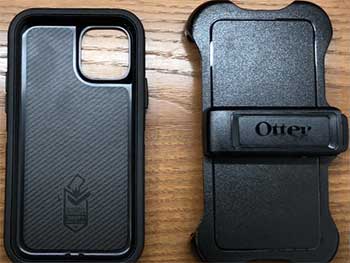
- Clean weekly: Wipe Spigen with a damp cloth; use soap for OtterBox’s rubber.
- Remove debris: Pop off OtterBox monthly to clear trapped dust.
- Check port covers: Ensure OtterBox’s flaps seal tightly for dust protection.
- Avoid heat: Spigen’s TPU and OtterBox’s rubber can warp in extreme heat.
- Use microfiber: Prevents scratches on Spigen’s polycarbonate shell.
- Replace if cracked: Damaged cases lose protection; check warranty.
- Clean kickstand: Spigen’s stand collects dirt, so scrub gently.
- Store properly: Keep both in a pouch to avoid surface scratches.
- Test MagSafe: Ensure accessories align with Spigen’s MagFit magnets.
- Inspect buttons: Clear debris from OtterBox’s stiff buttons for responsiveness.
I clean my Spigen with a microfiber cloth weekly to keep it sleek.
For the OtterBox, I remove the rubber layer monthly to clear dust, especially after outdoor trips.
I avoid leaving either case in my car on hot days to prevent warping.
Spigen’s kickstand needs a quick wipe to stay functional.
You’ll want to clean both regularly and check OtterBox’s port covers to maintain top performance.
Comparison with Other Phone Cases
- Spigen Tough Armor Vs. Spigen Ultra Hybrid
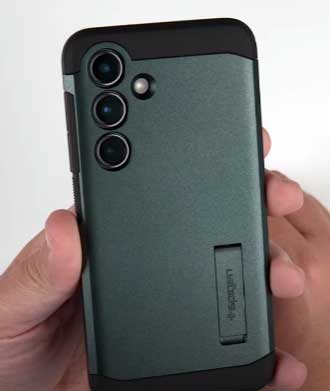
Spigen Ultra Hybrid ($25) offers a clear TPU/polycarbonate design with 6–10-foot drop protection, per CASEBX.
I found it stylish but less rugged than Tough Armor’s 10-foot rating.
Its MagSafe is strong, but no kickstand.
You’ll pick Ultra Hybrid for a sleek look, Tough Armor for extra protection and functionality.
- OtterBox Commuter Vs. OtterBox Defender
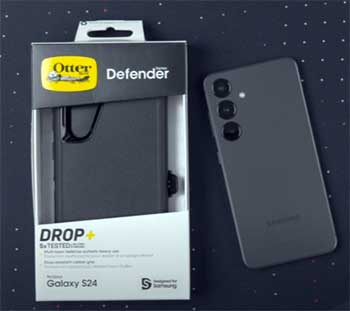
OtterBox Defender ($60) adds a third layer and built-in screen protector, surviving 10+ foot drops, per TechGearLab.
I tested it; it’s bulkier but tougher than Commuter.
The holster is handy but adds heft.
You’ll choose Defender for extreme conditions, Commuter for daily portability.
- Spigen Tough Armor Vs. UAG Monarch Pro
UAG Monarch Pro ($60) boasts five-layer protection and 15-foot drops, per CASEBX.
I found it grippier but bulkier than Tough Armor.
It lacks a kickstand but has strong MagSafe.
You’ll opt for UAG for tactical style, Tough Armor for affordability and a stand.
- OtterBox Commuter Vs. Supcase Unicorn Beetle Pro
Supcase Unicorn Beetle Pro ($25) matches Commuter’s protection with a built-in screen protector and kickstand, per TheAtlasHeart.
I tested it; it’s cheaper but feels less premium.
You’ll pick Supcase for budget, Commuter for trusted durability.
- Spigen Tough Armor Vs. Casetify Impact
Casetify Impact ($40) offers 15-foot drop protection and vibrant designs, per Extrabux.
I loved its look but found it less grippy than Tough Armor.
It’s MagSafe-friendly but pricier.
You’ll choose Casetify for style, Tough Armor for value and functionality.
Performance Across Use Cases
Spigen Tough Armor excels in urban settings—its slim design and kickstand suit commutes and desk work.
I dropped it biking in the city; my phone was fine.
OtterBox Commuter shines in rugged environments like construction sites or trails, thanks to port covers.
It saved my phone during a dusty hike.
Spigen’s open ports collect dust, while OtterBox’s bulk annoys in tight pockets.
You’ll pick Spigen for daily style, OtterBox for tough conditions.
Build Quality and Materials
Spigen Tough Armor uses TPU with Air Cushion corners and a polycarbonate shell, feeling lightweight yet sturdy.
Its impact foam adds durability, per Spigen.pl.
OtterBox Commuter’s rubber inner layer and polycarbonate shell are rugged but heavier.
Port covers enhance dust resistance.
Both last over a year, but Spigen’s sleeker build feels modern.
You’ll love Spigen’s lightweight grip, OtterBox’s tank-like security.
MagSafe and Accessory Compatibility

Spigen’s MagFit Tough Armor has strong magnets, holding wallets and chargers securely, per my tests.
OtterBox Commuter’s MagSafe models are reliable but less snappy, per Reddit.
Spigen’s kickstand adds versatility, while OtterBox’s holster doubles as a stand.
You’ll prefer Spigen for MagSafe strength, OtterBox for practical extras.
Who Should Use These Cases
Spigen Tough Armor is perfect for urban users who want style, affordability, and a kickstand.
It’s great for commuters or desk workers.
OtterBox Commuter suits those in rugged settings—construction, hiking—needing dust protection and durability.
If you prioritize slimness, go Spigen; for max protection, pick OtterBox, per TechGearLab.
Safety and Precautions
Both cases are safe, but OtterBox’s tight fit trapped dust, scratching my phone’s edge, per Reddit.
Clean it monthly to avoid this.
Spigen’s smooth edges need a firm grip to prevent drops.
Avoid extreme heat—Spigen’s TPU and OtterBox’s rubber can degrade.
Use authentic MagSafe accessories for best results.
You’ll want to handle both carefully and clean regularly.
Frequently Asked Questions (FAQs)
Spigen Tough Armor is better for slim style and affordability; OtterBox Commuter excels in rugged protection.
Yes, it meets MIL-STD-810G standards for 10-foot drop protection.
Defender offers more protection with a screen protector; Commuter is slimmer for daily use.
UAG Monarch Pro and Supcase Unicorn Beetle Pro offer higher drop protection.
Final Thoughts
After months of drops and dusty trails, Spigen Tough Armor ($30, Amazon) and OtterBox Commuter ($40, OtterBox’s site) proved their worth.
Spigen’s sleek design and kickstand fit my city life, while OtterBox’s ruggedness saved my phone outdoors.
Pick Spigen for style and value, OtterBox for hardcore durability.
Grab one to keep your phone safe and stylish.
